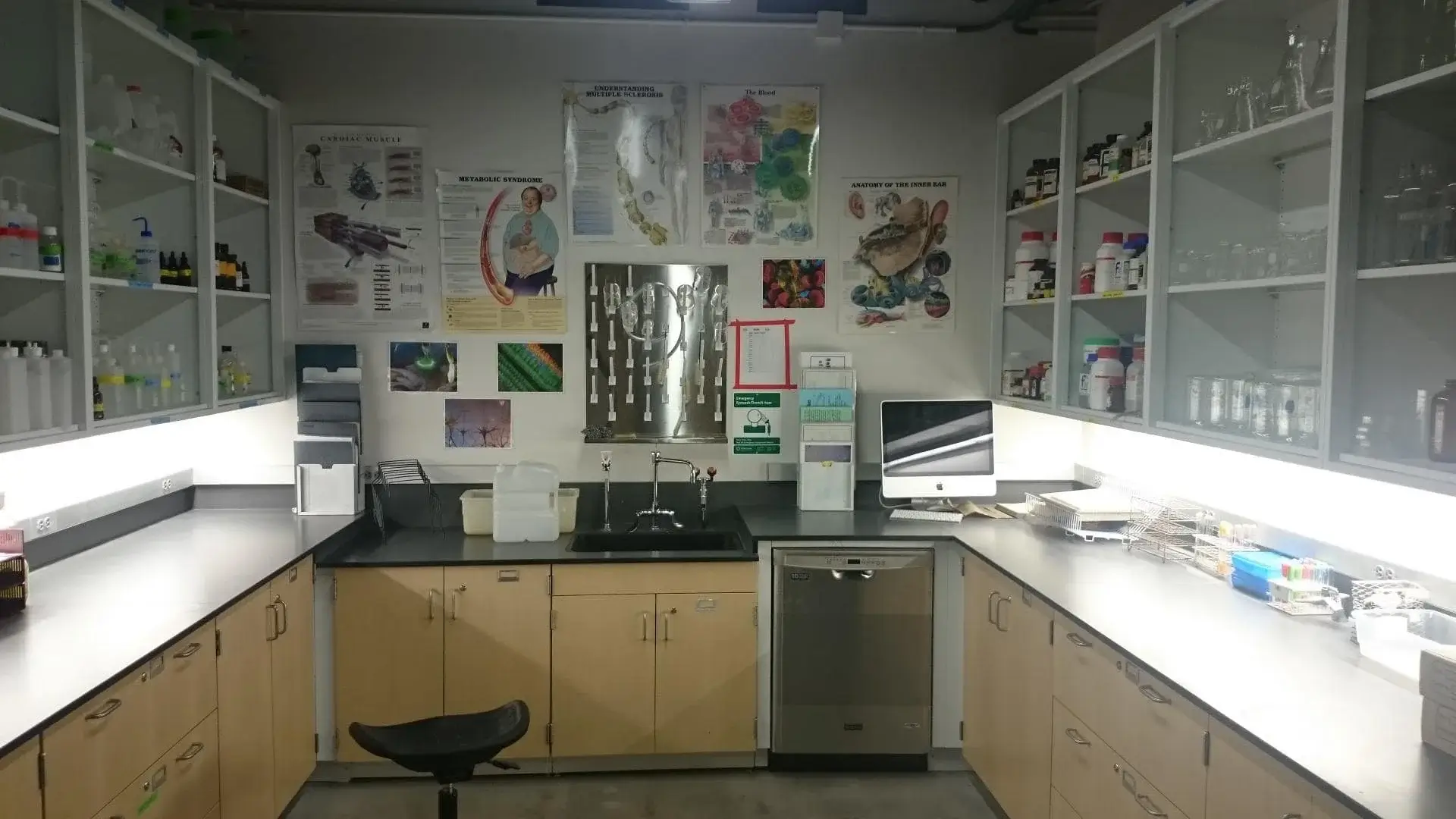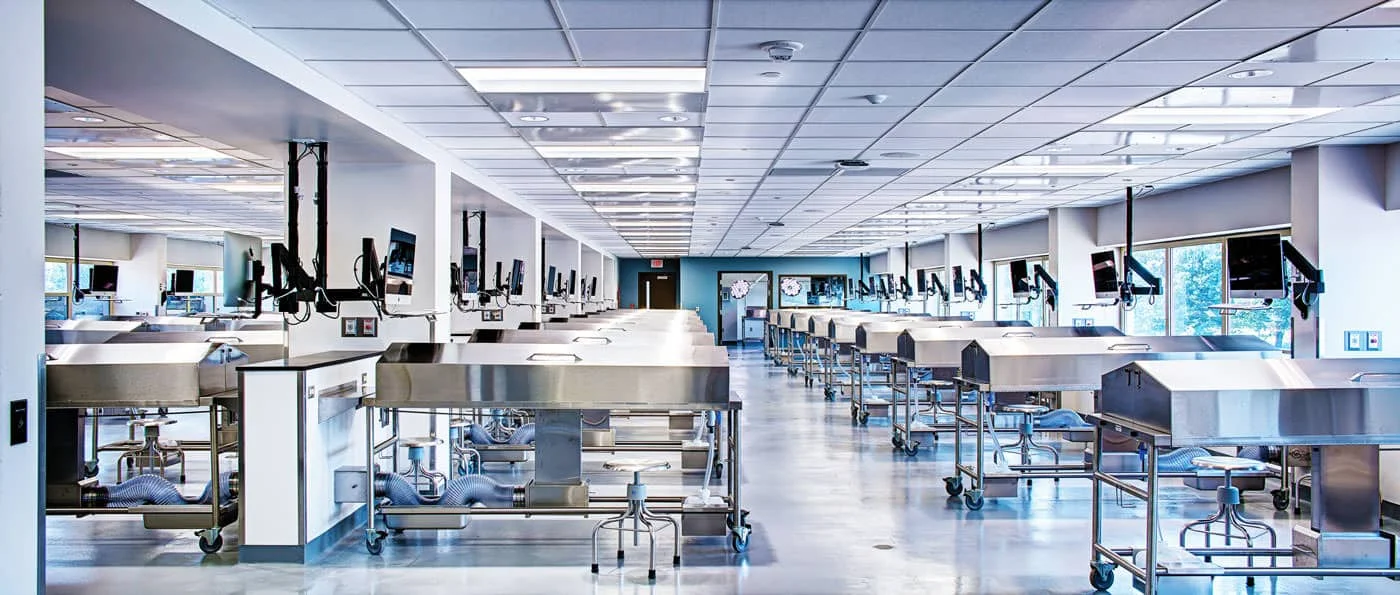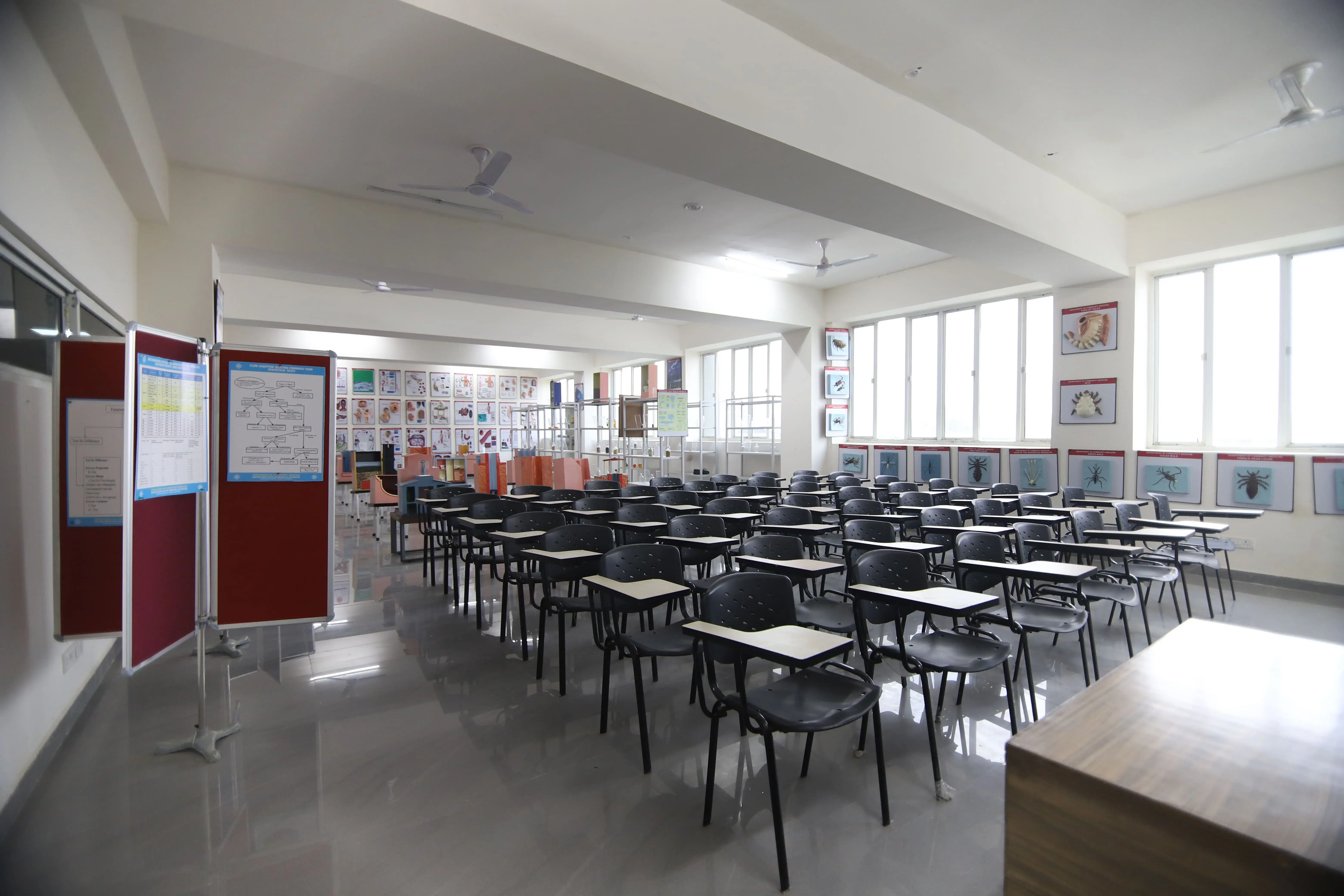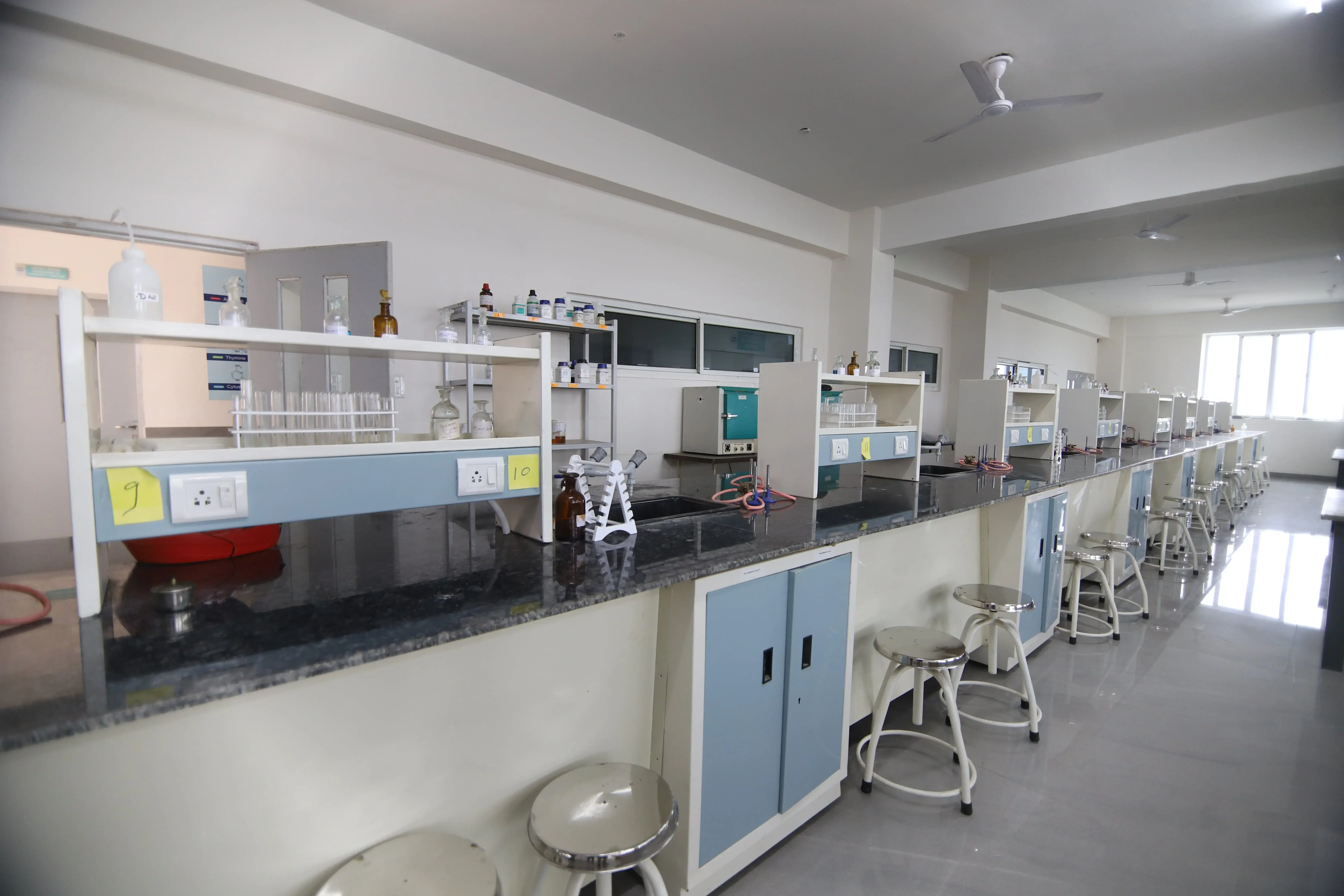Multispeciality Hospital & Medical College at Prayagraj MBBS Document Check List & Fee Details

The Department of Physiology is the primary department that started when the United Institutes of Medical Sciences, Prayagraj, came into existence. One hundred fifty students in MBBS from 2020 are undergoing teaching/training in Physiology. The National Medical Commission of India recognizes the degree of MBBS.
There are three laboratories, namely Human, Haematology, and Mammalian/Amphibian, for the UG students as recommended by the National Medical Commission of India. The main field of research in the department is on clinical physiology.
The department of Physiology adopts a blended approach in imparting medical education, which is open to newer concepts in medical education and retaining the time-tested teaching-learning principles.
The Faculty members are actively engaged in research work and have published many papers in National and International journals.
 Anatomy is a branch of medicine that studies the structures of the human body. This branch of medicine & our core competencies specializes in research and practice of histology tissue processing, cadaveric dissection, museum specimen preparation, and various model preparation methods. At the united institute of medical college, the Department of Anatomy has ultramodern facilities that meet all the requirements of undergraduate learning. This Department strives to offer an excellent learning environment for students via our horizontal and vertical, integrated approach through topographic, microscopic and developmental anatomy, combining these with clinical correlation and learner-centred methods to lay the basic foundation for research and a holistic approach to medicine. Students will need a sound knowledge of the human body as they venture into the clinical domain. This objective is achieved by practical training, using human cadavers, provided by donors based on agreements to donate bodies for teaching purposes. The Department is dedicated to endowing with value education, accomplishing research, and concentrating on the fast-growing medical education and society requirements. The Department of Anatomy at United Medical College is on the ground floor of the academic block. It comprises well-experienced faculty members trained technical staff. It consists of a dissection hall that is well ventilated & lighted, equipped with multimedia, provided with models, charts and skeleton. It is also provided with a mortuary cooler for the storage and cooling of cadavers. Human corpses are available for dissection purposes. The museum is equipped with models of gross anatomy, embryology and neuroanatomy. It also has articulated and disarticulated skeletons and carefully selected X-ray, CT and MRI films for students' learning activities. The Department is equipped with a furnished, spacious, well-ventilated histology laboratory with microscopes and a slide projecting microscope with a screen to demonstrate histological slides. The departmental library has the latest books and journals with air-conditioned seating arrangements. Demonstration rooms are available with audio-visual aids. The Department of Anatomy has a balanced approach with didactic lectures, dissection, demonstration of corpses, problem-based learning, and small group discussions. Courses are made exciting and lively with the use of multimedia.
Anatomy is a branch of medicine that studies the structures of the human body. This branch of medicine & our core competencies specializes in research and practice of histology tissue processing, cadaveric dissection, museum specimen preparation, and various model preparation methods. At the united institute of medical college, the Department of Anatomy has ultramodern facilities that meet all the requirements of undergraduate learning. This Department strives to offer an excellent learning environment for students via our horizontal and vertical, integrated approach through topographic, microscopic and developmental anatomy, combining these with clinical correlation and learner-centred methods to lay the basic foundation for research and a holistic approach to medicine. Students will need a sound knowledge of the human body as they venture into the clinical domain. This objective is achieved by practical training, using human cadavers, provided by donors based on agreements to donate bodies for teaching purposes. The Department is dedicated to endowing with value education, accomplishing research, and concentrating on the fast-growing medical education and society requirements. The Department of Anatomy at United Medical College is on the ground floor of the academic block. It comprises well-experienced faculty members trained technical staff. It consists of a dissection hall that is well ventilated & lighted, equipped with multimedia, provided with models, charts and skeleton. It is also provided with a mortuary cooler for the storage and cooling of cadavers. Human corpses are available for dissection purposes. The museum is equipped with models of gross anatomy, embryology and neuroanatomy. It also has articulated and disarticulated skeletons and carefully selected X-ray, CT and MRI films for students' learning activities. The Department is equipped with a furnished, spacious, well-ventilated histology laboratory with microscopes and a slide projecting microscope with a screen to demonstrate histological slides. The departmental library has the latest books and journals with air-conditioned seating arrangements. Demonstration rooms are available with audio-visual aids. The Department of Anatomy has a balanced approach with didactic lectures, dissection, demonstration of corpses, problem-based learning, and small group discussions. Courses are made exciting and lively with the use of multimedia.
 Department of Community Medicine is a pivotal unit in complementing and reinforcing the medical college manifesto of setting exemplary standards in quality teaching, training & research. It mainly focuses on instilling a rural predisposition among students. The Community Medicine department has the unique distinction of being the only department that takes a medical student to the community. The faculty has rich experience & exposure to academics applied and field research with good publication credentials. Community medicine is an essential component of the undergraduate medical curriculum. The teaching in community medicine extends from 1st to 7th Semester for students. Curriculum-based medical education for teaching & training curriculum is followed in the department. The pedagogy includes innovative learning modules essentially with practice & demonstration sessions, on-field practicals in project & community-based initiatives, PLA etc. The department runs peripheral health centers in slum areas and villages with a view of community services. The department has a well-developed museum with various models, charts, equipment, etc., for the teaching of medical students in community medicine.
Department of Community Medicine is a pivotal unit in complementing and reinforcing the medical college manifesto of setting exemplary standards in quality teaching, training & research. It mainly focuses on instilling a rural predisposition among students. The Community Medicine department has the unique distinction of being the only department that takes a medical student to the community. The faculty has rich experience & exposure to academics applied and field research with good publication credentials. Community medicine is an essential component of the undergraduate medical curriculum. The teaching in community medicine extends from 1st to 7th Semester for students. Curriculum-based medical education for teaching & training curriculum is followed in the department. The pedagogy includes innovative learning modules essentially with practice & demonstration sessions, on-field practicals in project & community-based initiatives, PLA etc. The department runs peripheral health centers in slum areas and villages with a view of community services. The department has a well-developed museum with various models, charts, equipment, etc., for the teaching of medical students in community medicine.
The primary objective of the Department of Community Medicine is to train the undergraduate students as Indian Medical Graduates so that they can come up with the expectations for the health care requirements of the nation.
The department has adequate teaching training and research facilities for students to enable them to provide comprehensive health care in terms of promotive, preventive and curative services to the community through its Rural and Urban Health Training Centres.
Biochemistry refers as chemical language of life, behaves as an integral part of clinical component in the disciplines of medicine, health bioengineering and technology. It is the most rapidly advancing science in medicine having wider impact on human health and disease. Most of the diseases are manifestation of abnormalities of molecules, chemical reactions or biochemical processes. Training in biochemistry covers comprehensive understanding of the chemical process associated with living cells, at the molecular level in normal and altered homeostatic conditions. The department of Biochemistry is one of the most well maintained & fully equipped department at United .The department also manages the clinical lab (Clinical Biochemistry) in the United Medicity Hospital where a range of biochemical tests are constantly carried out for the admitted patients. The department possesses a fully equipped chemical lab for the enrolled students for their day-to-day chemical analysis in accordance to their respective syllabus.
To give a brief overview, The Lab consists of:
